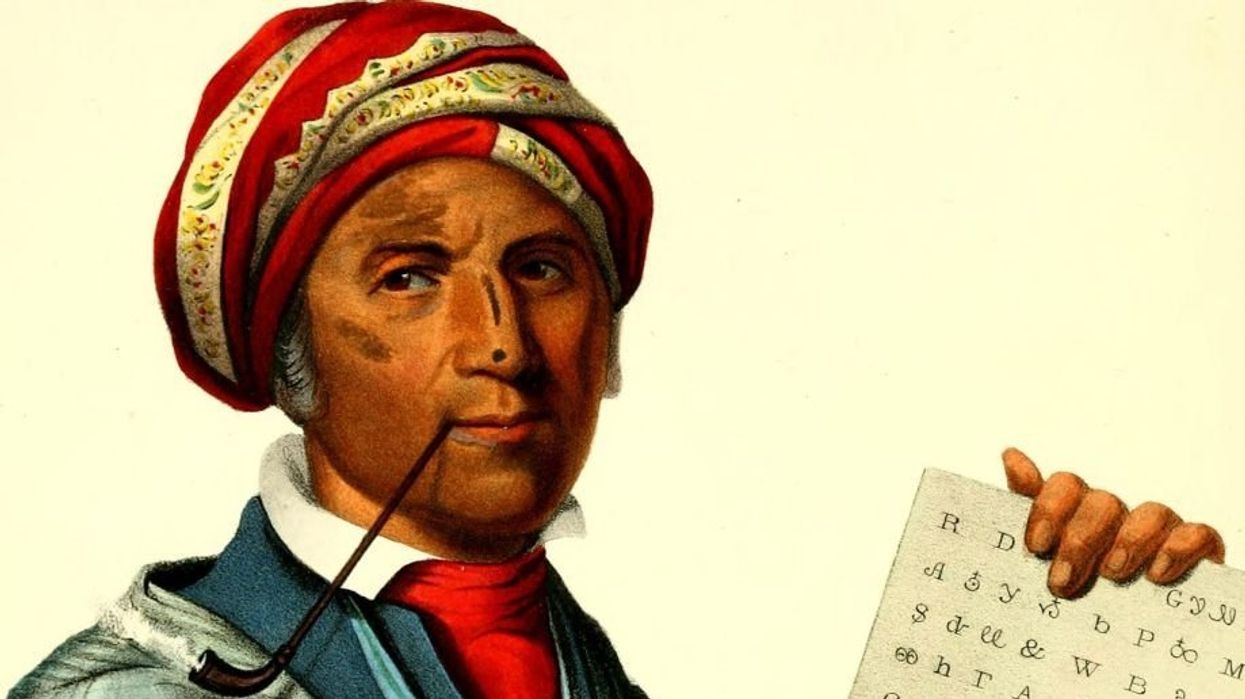
Smith Collection/Gado

A determination to harness the power of the written word saves an entire language from oblivion.
Modern society tends to equate mastery with specialized “expertise.” And yet we owe many of our advances to the brilliant, uncredentialed amateurs known as polymaths. Our own history is rich with versatile jacks-of-all-trades such as Benjamin Franklin and Thomas Jefferson. To that list we can also add the more obscure name of Sequoyah.
Born to a Cherokee mother and a white father around 1760 in what is now Tennessee, Sequoyah possessed a restless intellect. As a boy, he invented and built devices to help his mother milk cows; he was also a talented artist, creating pigments from crushed berries and bark.
As a teen, he trained as a warrior, learning to use the bow and arrow, the tomahawk, and the spear. From his mother, he picked up blacksmithing and silversmithing, building a forge and his own tools.
Sequoyah's sole language was Cherokee; like other indigenous languages, it had no written form. Despite his illiteracy, Sequoyah was able to intuit the power of the written word by observing soldiers during his stint in the U.S. Army.
He set about to create a syllabary for his native tongue, ultimately isolating 86 syllables and creating a character for each. After years of work, and much resistance from Cherokee leaders (who initially charged him with witchcraft), Sequoyah completed his syllabary, which was easy to learn and quickly adapted by most Cherokee speakers. In 1828, the Cherokee used this newfound written language to launch the "Cherokee Phoenix,” the nation's first bilingual newspaper.
With the Indian Removal Act of 1830, the U.S. government forcibly dispersed the Cherokee people from their homeland, stripping them of their belongings and sending many to their deaths. Thanks to Sequoyah's innovation, much Cherokee history and culture, that would otherwise have been lost, survived. Sequoyah's syllabary is still taught to students today.